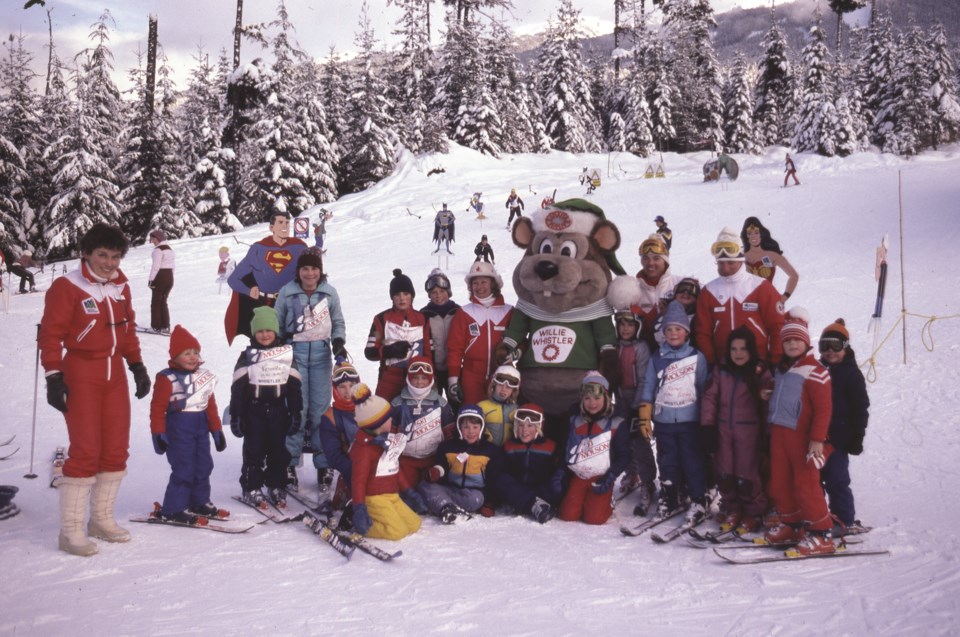Whistler is a hub for adventure sport and, if you have been here long, it is likely you know someone who has been affected by a head injury. With helmet use so standard on the mountain today, I found it surprising to see the following question asked in a 2011 museum oral history: “Do you think that sometimes more people get injured when they are wearing safety gear? They suddenly feel empowered and attempt something far beyond their abilities?”
Similar sentiments are echoed throughout many publications at this time.
Looking at photos from skiing in the early days of Whistler Mountain, it is unusual to see people wearing helmets. Helmets on the hill were uncommon even into the ’80s, and they clearly gained popularity throughout the ’90s and early 2000s as designs improved and they became more ingrained in local mountain culture.
Helmets were recommended on the slopes a long time before any mandates were introduced. There are stories from Whistler Blackcomb orientation where employees were asked to put their hand up if they wore a helmet. Those with their hands up were acknowledged as the smartest of the group.
Helmets became compulsory for all people under 18 attending ski or snowboard lessons in the 2009-10 winter season (requirements for children under 13 occurred earlier). Employees and those taking lessons were also required to wear helmets in the terrain park. At this time, Whistler Blackcomb also began to make a conscious effort to feature skiers and snowboarders wearing helmets in its promotional material.
Easily the most contentious decision around helmets occurred in April 2013, when Whistler Blackcomb was allegedly told by WorkSafe BC that it was not in compliance with Section 8.11 of the Workers’ Compensation Act. This act mandates that safety headgear is required for any employees where there is a risk of head injury. Until then, this decades-old regulation had never been enforced on ski hills.
Whistler Blackcomb took this discussion very seriously and announced that all employees on skis or snowboards were required to wear a helmet at work as of May 4, 2013, only two weeks after the meeting with WorkSafe BC. To ensure all employees were able to meet this regulation, there was a helmet-borrowing policy for the rest of the season and staff could get 45 per cent off when purchasing helmets from Whistler Blackcomb-owned stores.
Some members of Whistler Blackcomb management and staff were incensed with the swift decision by WorkSafe BC because there were still concerns about the safety of wearing helmets in certain situations, particularly during avalanche control when Ski Patrol are required to listen for hazards. (According to a survey around this time, patrollers were evenly distributed, with one third always wearing helmets, one third sometimes wearing helmets and one third never wearing helmets.) Headings such as “Helmet policy riles workers” and “Ski hills question ‘helmet rule’ for employees” dotted the local and provincial newspapers. Still, the greatest controversy surrounded whether it was appropriate to mandate helmet wear, or whether it should be a personal choice.
Despite helmets remaining a choice for visitors, the tide has turned. A nationwide Statistics Canada survey from 2017 found that 78.6 per cent of skiers and 76.3 per cent of snowboarders always wear helmets, and this is likely higher in Whistler. (Interestingly, helmet use amongst cyclists is much lower at 45.5 per cent). Today you can often tell approximately how old a photo is based on the number of helmets you see on the hill.




